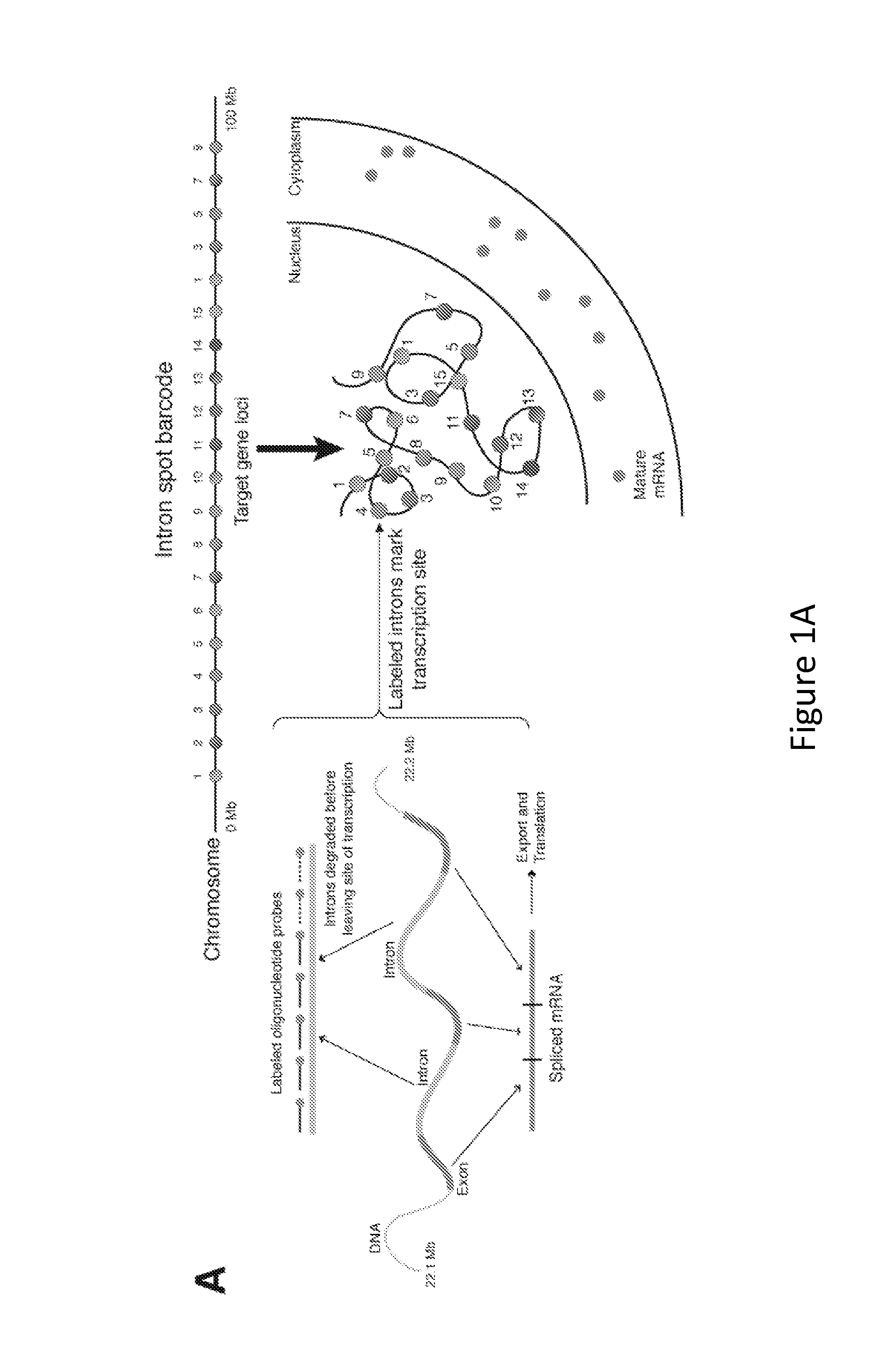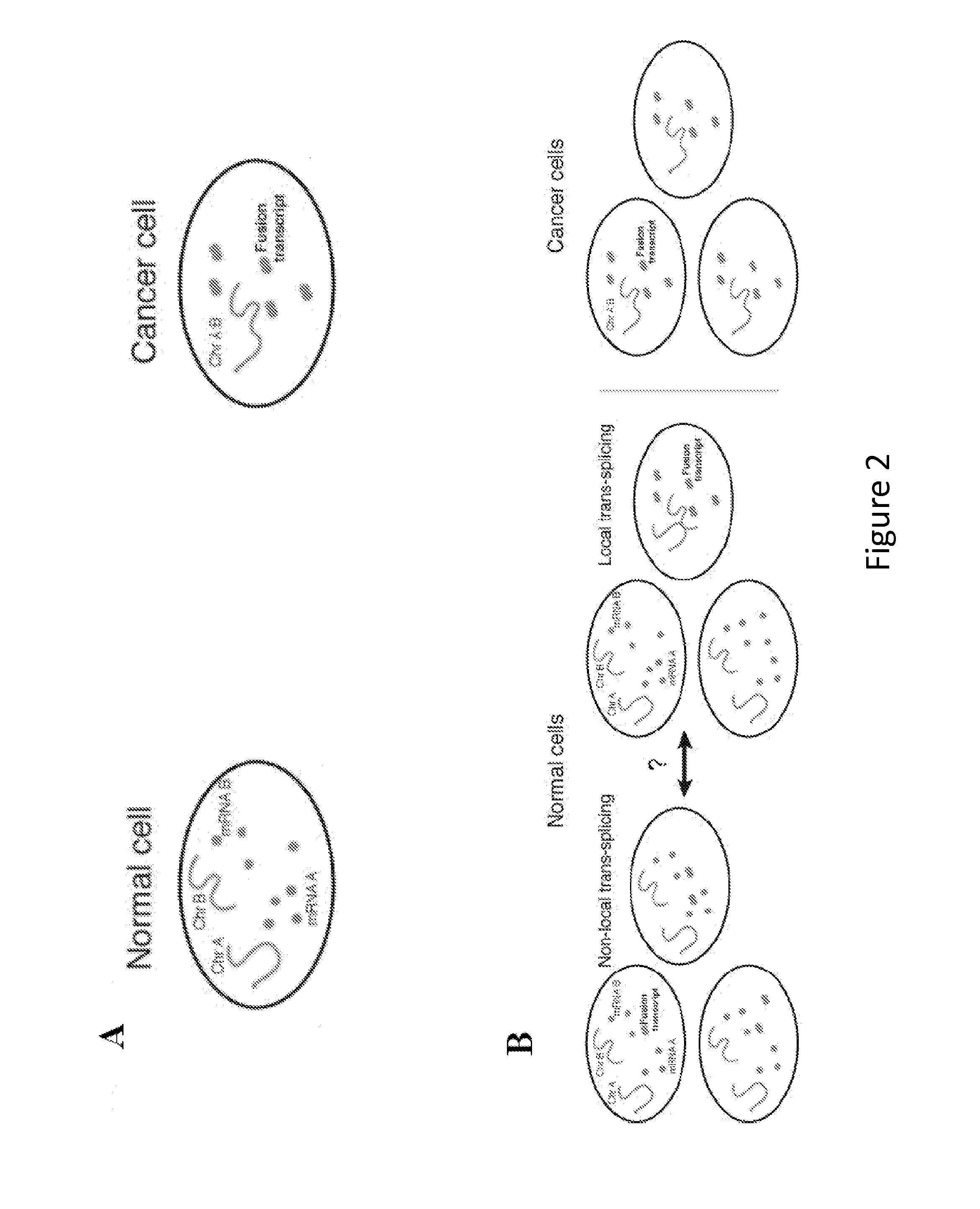Method for Detecting Chromosome Structure and Gene Expression Simultaneously in Single Cells
a technology applied in the field of single cell chromosome structure detection, can solve the problems of limiting the scope of the experiment, difficult to obtain gene expression data, and lack of clear picture of chromosome structure and gene expression
- Summary
- Abstract
- Description
- Claims
- Application Information
AI Technical Summary
Benefits of technology
Problems solved by technology
Method used
Image
Examples
experimental examples
[0085]The invention is now described with reference to the following Examples. These Examples are provided for the purpose of illustration only and the invention should in no way be construed as being limited to these Examples, but rather should be construed to encompass any and all variations which become evident as a result of the teaching provided herein.
[0086]The following methods were used in performance of the experimental examples:
Cell Culture, Fixation, and Fluorescent In Situ Hybridization
[0087]Primary human foreskin fibroblasts (ATCC CRL 2097) or HeLa cells (gift from the lab of Phillip Sharp) were grown in Dulbeceo's modified eagle's medium with glutamax (DMEM, Life Technologies) supplemented with penicillin / streptomycin and 10% fetal bovine serum. Cells were enriched for G0 / G1 phase cells through a double-thymidine block (2 μg / mL thymidine in medium) procedure and releasing for an appropriate amount of time before fixation. To fix the cells, the protocol of Raj et al. (N...
example 1
Simultaneous Determination of Chromosome Structure and Gene Expression
[0107]As depicted in FIG. 1B, 18 genes were targeted along chromosome 19, illuminating the chromosome robustly and with low background. Because the method of the present invention is based on RNA FISH, it is easy to combine with RNA FISH labeling mRNAs to simultaneously measure the expression of specific genes, as depicted in FIG. 1C. The introns themselves also yield critical gene expression information, since most genes' introns yield spots in fewer than 50% of cells. That said, the determination of overall chromosome structure via the methods of the present invention can additionally include the labeling of a large number of genes, thus imparting redundancy into the method, and may further include an RT-PCR screen to aid in the bioinformatic identification of abundant intron targets.
[0108]As depicted in FIG. 1B, distinctly labeled genes in three different regions of chromosome 19 reveal a remarkably ordered int...
example 2
Measuring Chromosome Structure and Gene Expression In Vivo
[0110]Many insights in systems biology have arisen from the use of time-lapse microscopy to understand the dynamics of cellular processes. For this reason, the methods of the present invention can also be applied to living cells to provide a dynamic view of chromosome structure and gene expression. To date, there is no way of looking at chromosome structure or gene expression in a non-perturbative (i.e., no genetic manipulation) manner via microscopy in single living cells.
[0111]Experiments can be performed to tackle the challenges of targeting nucleic acids in vivo. For example, considerations include hybridization kinetics, sequence design, oligonucleotide chemistry and delivery methods, amongst several others. RNA of a single intron from a highly expressed gene can be targeted by designing a series of 16-48 oligonucleotides, with the idea that the binding of a large number of oligonucleotides to a single location in the ce...
PUM
| Property | Measurement | Unit |
|---|---|---|
| Color | aaaaa | aaaaa |
| Structure | aaaaa | aaaaa |
| Gene expression profile | aaaaa | aaaaa |
Abstract
Description
Claims
Application Information
 Login to View More
Login to View More - R&D
- Intellectual Property
- Life Sciences
- Materials
- Tech Scout
- Unparalleled Data Quality
- Higher Quality Content
- 60% Fewer Hallucinations
Browse by: Latest US Patents, China's latest patents, Technical Efficacy Thesaurus, Application Domain, Technology Topic, Popular Technical Reports.
© 2025 PatSnap. All rights reserved.Legal|Privacy policy|Modern Slavery Act Transparency Statement|Sitemap|About US| Contact US: help@patsnap.com



